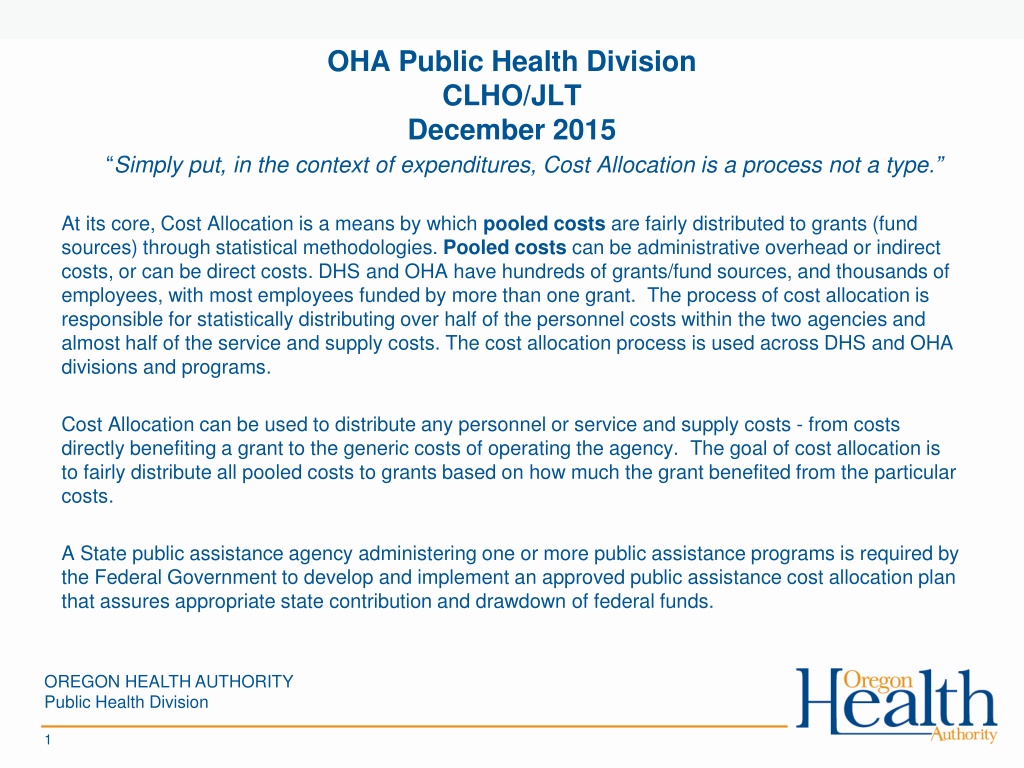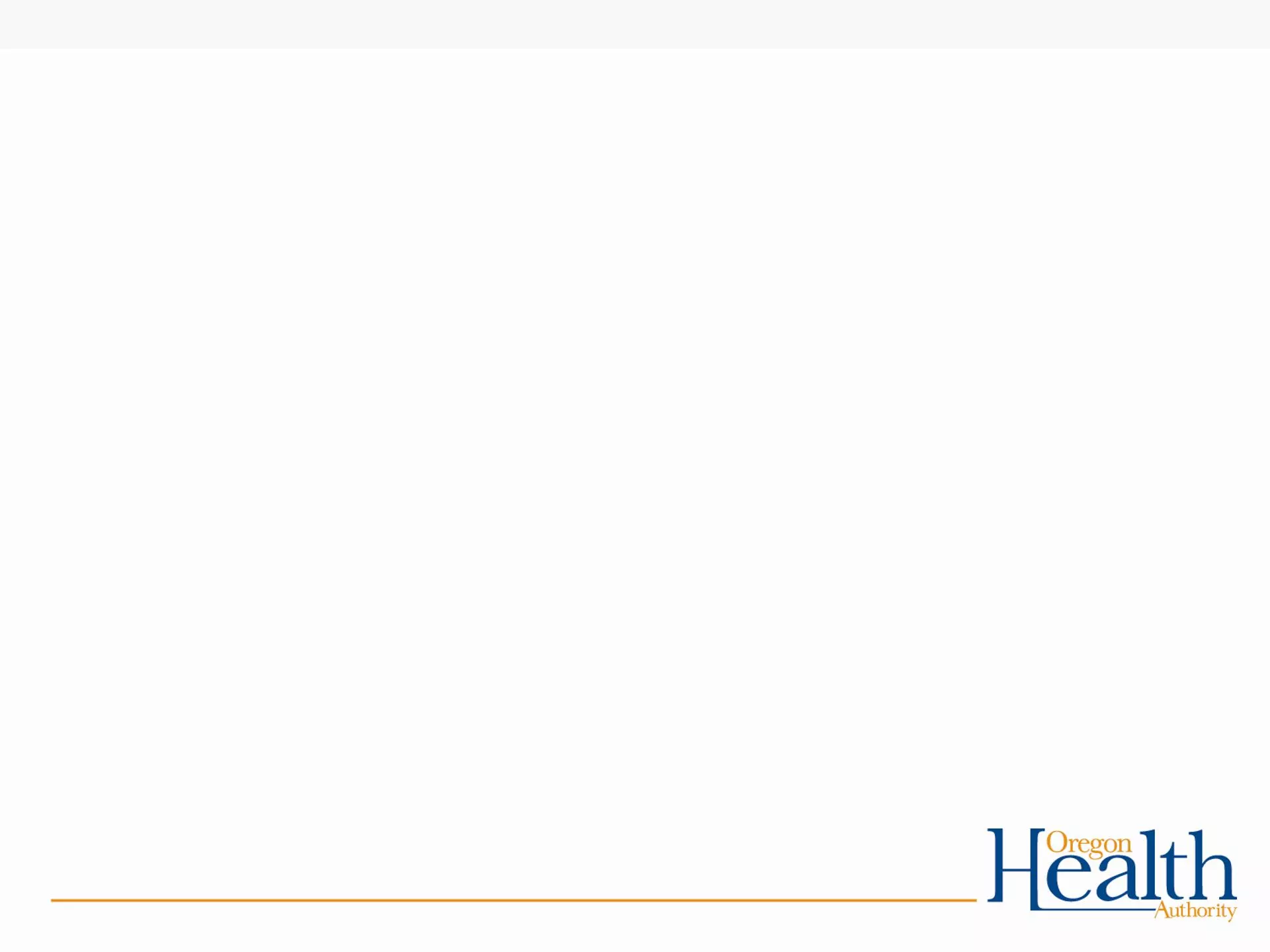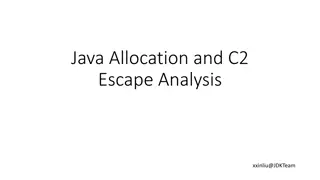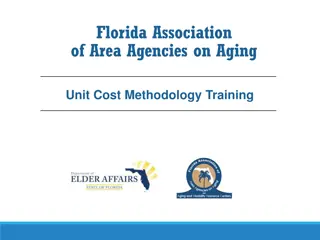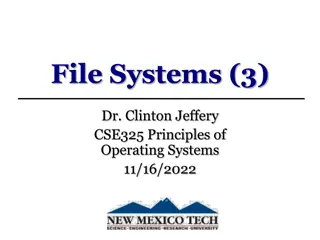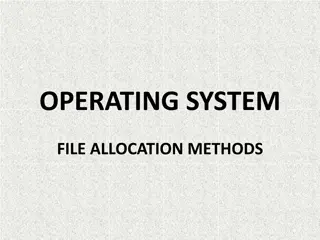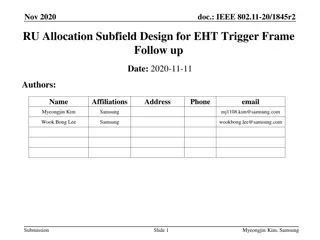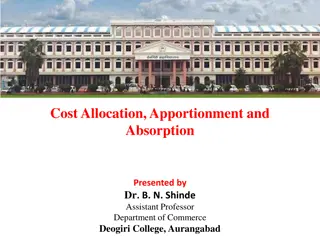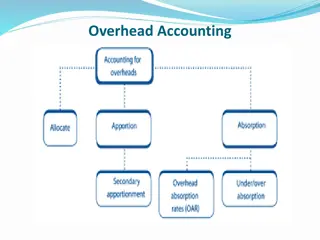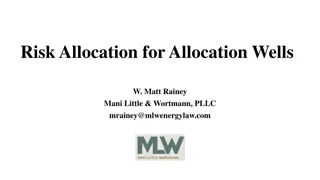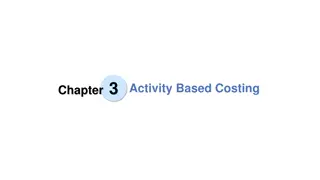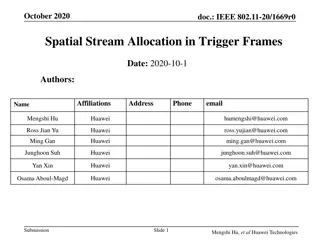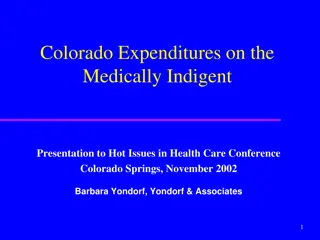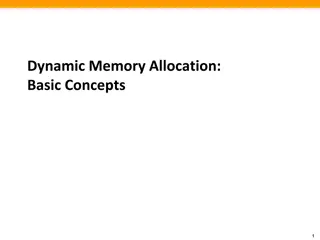Cost Allocation Process in Expenditures
Cost Allocation is a vital process in distributing pooled costs to grants fairly through statistical methodologies. Learn about how expenditures are allocated to various funding sources within public health agencies DHS and OHA, ensuring accurate distribution of personnel and service costs.
Download Presentation

Please find below an Image/Link to download the presentation.
The content on the website is provided AS IS for your information and personal use only. It may not be sold, licensed, or shared on other websites without obtaining consent from the author. Download presentation by click this link. If you encounter any issues during the download, it is possible that the publisher has removed the file from their server.
E N D
Presentation Transcript
OHA Public Health Division CLHO/JLT December 2015 Simply put, in the context of expenditures, Cost Allocation is a process not a type. At its core, Cost Allocation is a means by which pooled costs are fairly distributed to grants (fund sources) through statistical methodologies. Pooled costs can be administrative overhead or indirect costs, or can be direct costs. DHS and OHA have hundreds of grants/fund sources, and thousands of employees, with most employees funded by more than one grant. The process of cost allocation is responsible for statistically distributing over half of the personnel costs within the two agencies and almost half of the service and supply costs. The cost allocation process is used across DHS and OHA divisions and programs. Cost Allocation can be used to distribute any personnel or service and supply costs - from costs directly benefiting a grant to the generic costs of operating the agency. The goal of cost allocation is to fairly distribute all pooled costs to grants based on how much the grant benefited from the particular costs. A State public assistance agency administering one or more public assistance programs is required by the Federal Government to develop and implement an approved public assistance cost allocation plan that assures appropriate state contribution and drawdown of federal funds. OREGON HEALTH AUTHORITY Public Health Division 1
OHA Public Health Division CLHO/JLT December 2015 How the process works: During the process of Cost Allocation, expenditures are placed into a cost pool which then distributes the cost to multiple funding sources based on an allocation method. These distribution methods include measuring time spent on particular activities through Random Moment Sampling (RMS), distributing costs in proportion to the personnel costs paid for by a grant, and various combinations of allocation methods depending on the category and complexity of the charge. An allocated cost is first put into a cost pool. A methodology to spread the costs (such as RMS) is then determined. Next the monthly statistics of that method are used to distribute the costs out to agency grants. By doing so, DHS and OHA are able to draw federal funding in a fair and equitable manner. The following diagram shows a basic cost allocation process. OREGON HEALTH AUTHORITY Public Health Division 2
OHA Public Health Division CLHO/JLT December 2015 High Level Diagram of How it Works: The DHS/OHA cost allocation model contains a billing allocation module and a grant allocation module. The billing allocation module allocates Shared Service costs to the two agencies. The billing module allocates costs to customers within each agency. It does not allocate costs directly to Federal grants. The grant allocation module allocates costs within each agency to State and Federal grants. These costs include those directly incurred by the agencies, Shared Service costs allocated to DHS | OHA by the billing allocation module, and external costs allocated to the DHS & OHA by other State agencies). OREGON HEALTH AUTHORITY Public Health Division 3
OHA Public Health Division CLHO/JLT December 2015 Below is a diagram showing how our Shared Service Offices bill both agencies and receive the revenue as payment for that bill. The logic is similar to the way DAS bills DHS | OHA and we pay for that bill with our General, Other and Federal Funds. The process, however, is quite different. We handle these transactions electronically. We do not send a paper bill or require someone to code an invoice. OREGON HEALTH AUTHORITY Public Health Division 4
OHA Public Health Division CLHO/JLT December 2015 Cost allocation is at its core very simple, but with so many grants and methods to distribute costs it can be a very complex set of calculations. This was meant to provide the highest level overview of cost allocation. The goal is to help you understand how cost allocation basically works and to increase transparency of the cost allocation process. Several resources are available to assist in identifying where costs that run through these modules originated from as well as more detailed training materials which can be found on the OHA/DHS Cost Allocation Intranet site at the link below: https://inside.dhsoha.state.or.us/asd/finance/financial-services/cost-allocation.html For PHD partners seeking additional cost allocation reports, approved plans, additional training materials, or other related resources please contact Jayne Bailey at jayne.bailey@state.or.us. Thank you. OREGON HEALTH AUTHORITY Public Health Division 5
